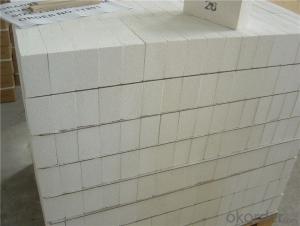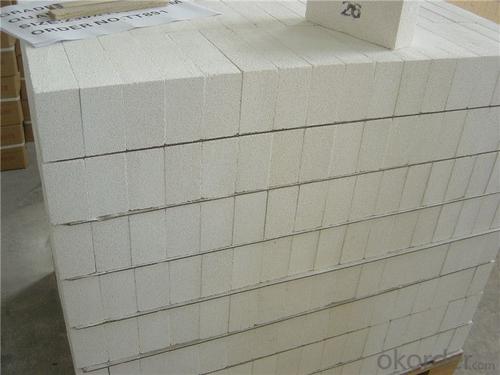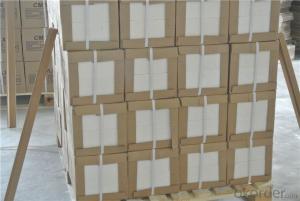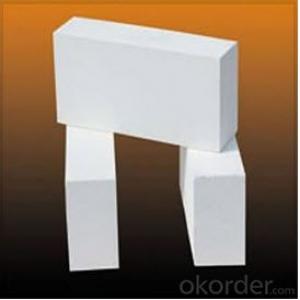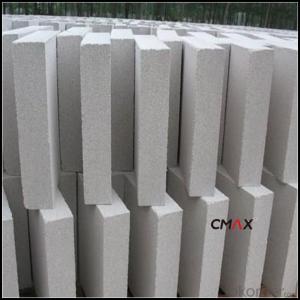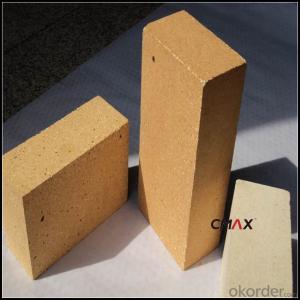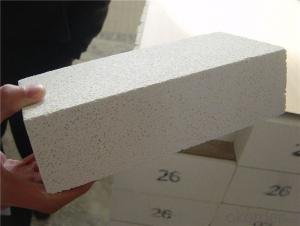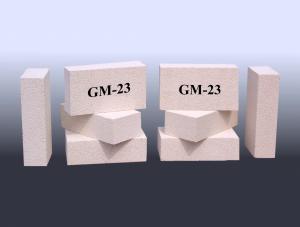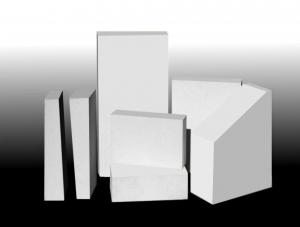Insulating Fire Brick - High Temperature Fireproof Fire Clay Refractory Heat Insulation Bricks for Thermal Equipment
- Loading Port:
- Shanghai
- Payment Terms:
- TT OR LC
- Min Order Qty:
- 1 m.t.
- Supply Capability:
- 1000 m.t./month
OKorder Service Pledge
OKorder Financial Service
You Might Also Like
Thermal Insulation Fire Clay Brick
Refractory brick is a block of refractory ceramic material used in lining furnaces, kilns, fireboxes, and fireplaces.
We provide high quality Refractory Fire Bricks that are used on wide range in the various industries like Cement, Glass and Steel. Refractory Fire Bricks are provided as per the quantity and specifications required by the customers. We provide an extensive range of Refractory Fire Bricks at reasonable prices that depend upon the quantity ordered.
Application
Insulating Fire Brick are used for the lining of converter, alternating current arc furnace, direct Current arc furnace and the ladle slag line, etc.
Company Advantage
(1)Long Insulating Fire Brick manufacture history: 25 years manufacturer
(2)Advanced equipment
(3)Diversification of production standards: ISO ANSI FEPA JIS ASTM
(4)Flexible payment: T/T L/C D/P D/A
(5)Professional marketing team and after-sale service
Insulating Fire Brick main feature:
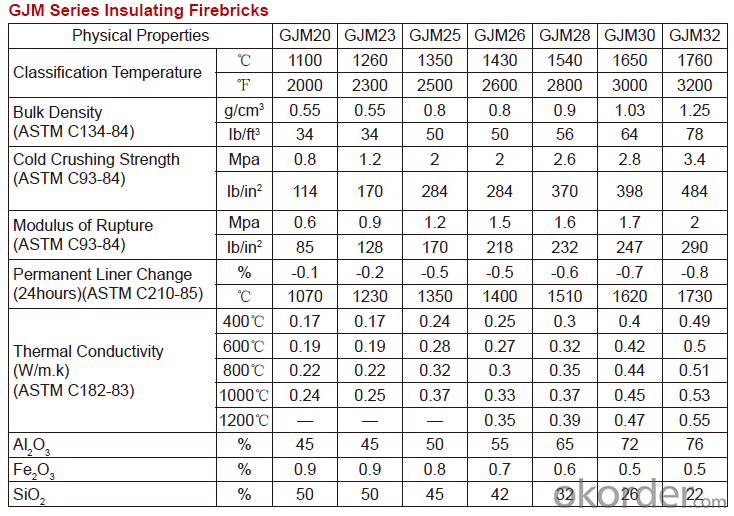
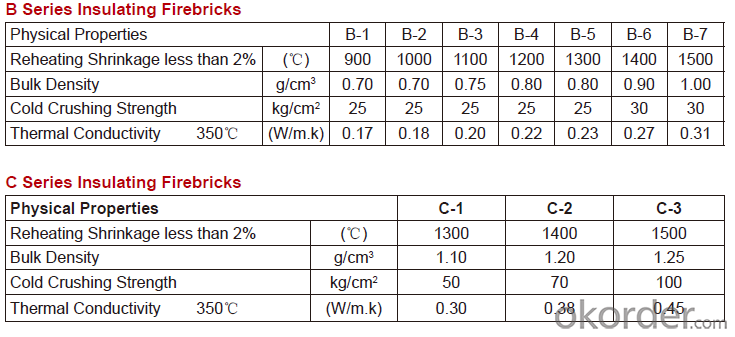
Equipment
1 unit of Ceramic Abrasive (SG Abrasive) pilot production line
2 units of Compact grain Abrasive pilot production lines
1 unit of high-end coated abrasives (abrasive cloth) production line
2 units of Boron Carbide production lines
3 large flexible crushing and sieving lines for grit production lines
6 units of 5000KVA-10000KVA dumping type electric arc furnaces for Brown Fused Alumina fusion
Q1 What’s the transport method?
A1 FCL delivery goods with wooden pallet or wooden case by sea; If LCL delivery, must with wooden case; Sometimes need open top, flat rack or bulk cargo.
Q2 What’s the required payment term?
A2 Generally 30% TT as the prepayment, 70% TT before delivery. If need, 100% Irrevocable Letter of Credit or negotiation.
Q3 Which country are our products exported to?
A3 Apart from entire Chinese market, the US, Russia, Japan, Korea, Australia and some Southeast Asian Nations.
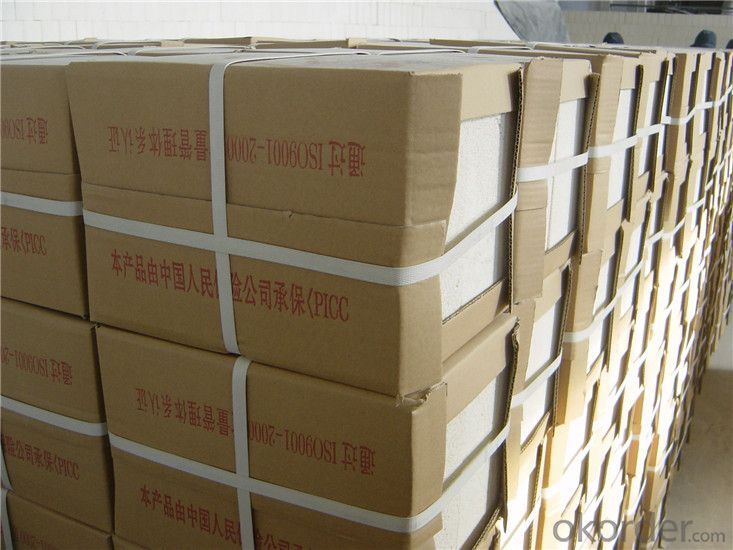

- Q: Are insulating fire bricks suitable for use in coke ovens?
- Insulating fire bricks are not suitable for use in coke ovens. Coke ovens require bricks that can withstand extremely high temperatures and harsh chemical environments. Insulating fire bricks are designed to provide thermal insulation and are not able to withstand the heat and chemical exposure that occurs in coke ovens. Therefore, it is crucial to use refractory bricks specifically designed for coke ovens, which have high resistance to temperature, chemical attacks, and thermal shock. These refractory bricks are typically made from materials such as silica, alumina, and carbon, which can withstand the harsh conditions inside the coke ovens.
- Q: Can insulating fire bricks be used for insulation in power boiler walls?
- Certainly! The application of insulating fire bricks for insulation in power boiler walls is possible. These bricks are specifically engineered to possess a low thermal conductivity, thereby enabling them to efficiently insulate power boilers operating at high temperatures. Constructed from lightweight materials like clay and other refractory substances, these bricks exhibit exceptional insulation characteristics while enduring the extreme heat encountered in power boilers. By integrating insulating fire bricks into power boiler walls, heat loss can be minimized, energy efficiency can be enhanced, and the boiler can sustain optimal operating temperatures.
- Q: How do insulating fire bricks help reduce fuel consumption?
- Insulating fire bricks help reduce fuel consumption by providing efficient insulation in high-temperature environments. These bricks are made of lightweight materials with high thermal resistance, allowing them to trap heat and prevent it from escaping. By minimizing heat loss, insulating fire bricks create a more energy-efficient environment, where less fuel is required to maintain the desired temperature. Additionally, the insulating properties of these bricks can help to evenly distribute heat, reducing the need for excessive fuel usage to compensate for uneven heating. Overall, the use of insulating fire bricks helps to conserve fuel and reduce energy waste in various industrial applications, such as kilns, furnaces, and ovens.
- Q: Can insulating fire bricks be used in fertilizer plants?
- Yes, insulating fire bricks can be used in fertilizer plants. Insulating fire bricks are known for their excellent thermal insulation properties, high heat resistance, and low thermal conductivity. These properties make them suitable for various industrial applications, including fertilizer plants. In fertilizer plants, there are often processes that involve high temperatures, such as the production of ammonia or the conversion of raw materials into fertilizers. Insulating fire bricks can be used to line the walls, floors, and roofs of the furnaces, kilns, and reactors used in these processes. The thermal insulation provided by insulating fire bricks helps to minimize heat loss, increase energy efficiency, and maintain a stable temperature inside the processing units. This is crucial for controlling the chemical reactions and ensuring the optimal performance of the plant. Additionally, insulating fire bricks have a high resistance to chemical attack, which is essential in fertilizer plants where corrosive substances are often handled. They can withstand the harsh chemicals and gases present in the production environment without deteriorating or compromising their insulating capabilities. Furthermore, insulating fire bricks are lightweight, making them easier to handle and install in different areas of the plant. This can result in cost savings during construction or maintenance activities. Overall, insulating fire bricks are a suitable choice for fertilizer plants due to their thermal insulation properties, high heat resistance, chemical resistance, and lightweight nature. They can contribute to the efficient and safe operation of the plant, while also providing long-lasting performance in the demanding conditions of the fertilizer industry.
- Q: Can insulating fire bricks be used in the construction of hot blast stoves?
- Indeed, it is possible to utilize insulating fire bricks in the fabrication of hot blast stoves. These bricks are specifically engineered to possess a low thermal conductivity, rendering them highly efficient in diminishing heat dissipation. In order to ensure optimal functionality, hot blast stoves necessitate the maintenance of elevated temperatures, a goal that can be accomplished through the utilization of insulating fire bricks, which effectively restrict heat transfer to the stove's external surface. Furthermore, these bricks exhibit commendable insulation properties, enabling energy conservation and enhancing the overall efficiency of the stove. Moreover, it is worth noting that insulating fire bricks are resistant to thermal shock, a crucial attribute in hot blast stove applications where frequent temperature fluctuations are common.
- Q: Are insulating fire bricks suitable for use in glass melting furnaces?
- Depending on the requirements of the furnace and the type of glass being melted, insulating fire bricks may be a suitable option for glass melting furnaces. These fire bricks are constructed from lightweight materials that have low thermal conductivity, enabling them to effectively retain heat and minimize energy loss in the furnace. This, in turn, can enhance the furnace's energy efficiency and decrease operational expenses. Nevertheless, it is essential to take into account the temperature and atmosphere within the glass melting furnace when selecting the appropriate insulating fire bricks. Glass melting furnaces function at extremely high temperatures, often surpassing 1500°C (2732°F). Some insulating fire bricks may not be capable of enduring such elevated temperatures and could deteriorate or even melt under these circumstances. Furthermore, the atmosphere within the glass melting furnace can influence the suitability of the insulating fire bricks. Certain types of these fire bricks may interact with specific gases or chemicals present in the furnace atmosphere, leading to degradation or contamination of the molten glass. Hence, it is crucial to choose insulating fire bricks that are compatible with the precise atmosphere and conditions within the glass melting furnace. To summarize, insulating fire bricks can be appropriate for use in glass melting furnaces, but careful consideration must be given to their temperature resistance and compatibility with the furnace atmosphere. Seeking guidance from specialists or suppliers who specialize in refractory materials for glass melting furnaces can help ensure the appropriate selection of insulating fire bricks for optimal furnace performance and glass quality.
- Q: What are the advantages of using insulating fire bricks over other insulation materials?
- Insulating fire bricks offer numerous benefits compared to other insulation materials. To begin with, their high thermal conductivity effectively prevents heat transfer, making them ideal for applications where heat containment is crucial, such as furnaces, kilns, and industrial ovens. Their ability to withstand high temperatures and prevent heat loss makes them a reliable insulation option. Furthermore, insulating fire bricks are extremely durable and resistant to wear and tear. They are constructed with high-quality refractory materials designed to withstand extreme conditions like thermal shocks and chemical exposure. This durability ensures a longer lifespan and reduces the need for frequent replacements or repairs. Another advantage lies in their versatility. Insulating fire bricks come in various shapes and sizes, allowing for easy customization and installation in different applications. They can be effortlessly cut or shaped to fit specific requirements, making them suitable for complex geometries or curved surfaces. This flexibility allows for efficient insulation in a wide range of settings. Moreover, insulating fire bricks possess excellent insulation properties even at lower densities. This means they can provide optimal thermal insulation while also reducing the overall weight of the structure. This is particularly advantageous in industries where weight reduction plays a critical role, such as aerospace or automotive manufacturing. Lastly, insulating fire bricks are environmentally friendly. They are typically manufactured using natural and recyclable materials, minimizing their impact on the environment. Additionally, their long lifespan and low maintenance requirements contribute to sustainability by reducing waste generation and energy consumption. In conclusion, the advantages of utilizing insulating fire bricks over other insulation materials encompass high thermal conductivity, durability, versatility, lightweight design, and environmental friendliness. These characteristics establish them as the preferred choice for insulation in various industries and applications.
- Q: How do insulating fire bricks help improve the efficiency of combustion processes?
- Insulating fire bricks help improve the efficiency of combustion processes by providing excellent thermal insulation, which minimizes heat loss and enhances heat transfer to the desired areas. This insulation prevents excessive heat from escaping to the surroundings, allowing for higher temperatures within the combustion chamber. As a result, the combustion process becomes more efficient, leading to better fuel combustion, reduced fuel consumption, and increased energy savings.
- Q: Can insulating fire bricks be used as a backup insulation in refractory linings?
- Insulating fire bricks have the capability to serve as backup insulation in refractory linings. These bricks are specifically designed with low thermal conductivity, enabling them to effectively minimize heat transfer in high-temperature scenarios. Due to their insulating properties, they are an excellent choice for a secondary insulation layer in refractory linings. This not only aids in reducing heat loss but also enhances overall energy efficiency. Another advantage is their lightweight nature, which simplifies handling and installation compared to alternative refractory materials. Nonetheless, it is crucial to carefully evaluate the application's specific needs and consult with a refractory engineer to confirm the suitability of insulating fire bricks for the particular conditions and performance requirements of the refractory lining.
- Q: Can insulating fire bricks be used in metal smelting furnaces?
- Yes, insulating fire bricks can be used in metal smelting furnaces. Insulating fire bricks are designed to have low thermal conductivity, which means they can effectively retain heat and prevent heat loss from the furnace. This makes them ideal for use in metal smelting furnaces, where high temperatures need to be maintained for extended periods of time. Additionally, insulating fire bricks are resistant to thermal shock and can withstand the harsh conditions and rapid temperature changes that occur during metal smelting processes. They are also lightweight, making them easier to handle and install in the furnace. Overall, insulating fire bricks are a suitable choice for use in metal smelting furnaces to improve energy efficiency and increase the lifespan of the furnace.
Send your message to us
Insulating Fire Brick - High Temperature Fireproof Fire Clay Refractory Heat Insulation Bricks for Thermal Equipment
- Loading Port:
- Shanghai
- Payment Terms:
- TT OR LC
- Min Order Qty:
- 1 m.t.
- Supply Capability:
- 1000 m.t./month
OKorder Service Pledge
OKorder Financial Service
Similar products
Hot products
Hot Searches
Related keywords
